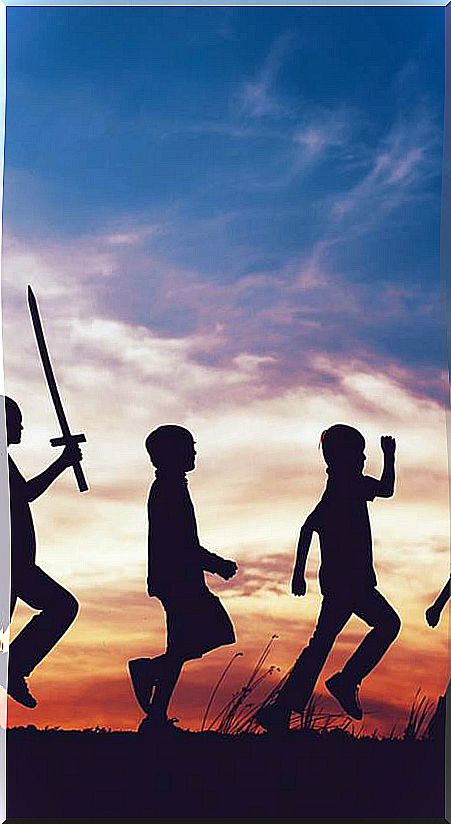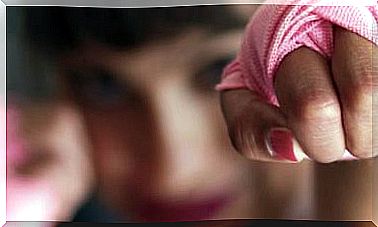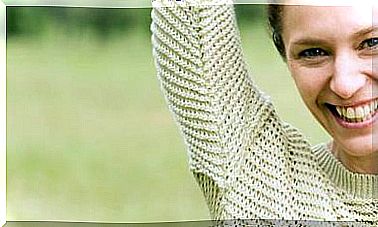Bullying Is Not For Children
To solve school bullying, we cannot consider it as a problem between victims and perpetrators, but resort to normalized violence models.

The center of the problem is not one child who bullies and another who receives. It is to recognize that subtle but normalized violence governs our relationships between adults and children. And our example has caught on.
It is increasingly common to see cases of bullying in the news, some with terrible outcomes. They increase alarmingly in number, meanwhile we only focus the problem on children without looking for possible causes.
We adults have an amazing facility to stop looking at ourselves and transform what happens into a problem only for the victims, only for children.
Bullying stories
The bullying against Alejandro
When Alejandro (I’ll use fictitious names) made a new friend at school, another boy started excluding and insulting him. He threatened to smash his face and ended up pushing him down the stairs of the school. Alejandro spent the day hiding in the library, afraid to go out.
Her mother went to talk to the teacher, who told her that they were minor children’s things.
But the mother did not give up and not only protected her son but discovered that the other boy hated him because he had taken his best friend from him. He also ended up finding out that their father had abandoned them and that their environment was not overly loving.
Once the child who was attacking was able to verbalize everything and felt heard, the bullying subsided and both children lived together peacefully again.
Carlos’s bullying
Carlos was a child who abused others. Several families complained to the school that, on the one hand, it decided to expel the child, but, on the other, it denied the harassment, saying that “it was children’s things”.
Nobody knew that Carlos was experiencing a situation of gender violence at home and that he was also mistreated by his father.
We set a bad example
What is happening? That children are only reproducing what adults are transmitting to them with our constant example. In a thousand different ways.
- We do not allow them to defend themselves (we put defense and attack in the same bag too easily).
- We abuse them by building a power relationship that shouldn’t be such.
- We engage in verbal and sometimes physical violence with other adults while they witness it.
- We teach them to compete.
- We punish them. We yell at them. At home and at school. We hit them so that they “learn” not to hit.
What do we want them to do with all this?
Bullying is part of the harvest of authoritarian parenting.
We are putting up a neon sign telling them to abuse other children, and then punish them more.
How do we end bullying?
The way is not as simple as punishing the abuser, because he is also a victim. The way is to protect children who suffer bullying without hesitation and stop it in its tracks, but understanding that the bully also needs help.
We have to ask ourselves what happened to that child to need to do that. And, above all, work on the causes of bullying, not the symptoms.
In other words, stop us from constantly bullying children. We must not punish by harassing again, reinforcing the example.
Our normalized bullying of children has not only to do with punishments, badly called educational slaps or yelling.
It also has to do with ignoring him, forcing him to give kisses even if they do not want to, teaching him to share his things by system, withdrawing our affection to handle the child, or exercising authoritarianism disguised under beautiful words.
In fact, this overbearing sweetening is also very dangerous. The web that can weave in the psyche of these children is very convoluted, full of guilt, anger, self-hatred, because how can I question my parents if they do everything from love?
My practice is full of adults affected by “normal” parenting, with loving parents who used this subtle violence, disguised. It is very difficult for them to realize what is happening.
Harassment as a normalized system
It is complex, since, on the one hand, we are teaching children that violence is legal through television programs, video games … Furthermore, when we witness it, in our real life, on the street, we do not intervene, we normalize it.
But, on the other hand, they cannot defend what they want, what they need, because since we were little we have insisted over and over again as a mantra: “You have to share.”
But, with our way of acting, we sent them the example, the message, that they can exert violence in the form of harassment against someone weaker: “Don’t even think about defending yourself. It harasses as a system to survive ”.
How do adults act? Adults who should care for and protect children have become fearful law enforcement officers. Adults who will not believe me if I ask them for help, because the word of a child does not count. I turn to them to find a culprit, to punish the child who has hurt me, not to seek protection and ask for help for both of them, understanding that something must have happened to the other to act like this.
And once the bully is punished, the model is reinforced and grows: I will never understand that I have been able to harm the other, only that bullying is wrong if you get caught, because there is always a bigger fish (the adult) who punishes me. The cause remains, the example is multiplied and hatred towards the “snitch” child intensifies.
How can we get out of here?
Changing the model of power relations and returning to what characterizes the human being: cooperative relations.
Taking care of our children, protecting them, giving them a healthy and consistent example.
Understanding the signs that something is happening, or this serious problem will continue.
How to change the equation in bullying
Bullied and bullies arise from the same conflict and need the same thing: a strong bond based on trust and cooperation. Also live conflicts in a healthy way and be able to release your tension.
If we remove authoritarianism and covert violence in our relationships, it will also disappear among children.
What can we parents do?
Listen to your son. We tend to downplay what children tell us or, outright, ignore them. We shouldn’t do it.
- No to authoritarianism. A parenting based on fear and punishment will only end up internalizing the pattern of harassment and violence. In addition, this way we will break the link between us and, therefore, communication.
- Practice by example. Both normalized and exerted violence, whether subtle or direct, only engender more violence. Be the example you want to be for your child.
- Intervene in abusive situations. If you witness it, be it towards adults, children or animals, do not normalize it. Your child watches you and takes note of everything you do. All of us should intervene in these situations.
- Don’t break their defense capabilities. Do not convey to him that he should not defend himself or that he must share by system. Adults must protect children and intervene whenever they harm themselves, but not intervene by system, depriving them of a healthy experience of conflict and reducing their self-confidence.
- Prevent them from witnessing violence. Be careful with what we see on television and with everything they hear us say or see us do. Criticizing other people in front of children or insulting the driver of the car next door is not going to help them.
- Do not allow any adult to abuse your child. Intervene immediately, he needs to hear that you do not normalize these situations. Do not allow them to give you kisses or receive them if you do not want to, do not allow them to suppress their emotions, do not allow other people to punish or harass them. Including their teachers.
- Ask yourself why. Why do you think he does not defend himself or why does he harass? From the knowledge of the child’s history and the environment that surrounds him, it can be worked.
- Use mediators. Sometimes children do not know how to express what is happening to them or it is difficult for them to do so. The use of drawing or representation with dolls can help you with this.
What do our children need?
- Immediate protection. Let’s not wait for the school to take action.
- Do not internalize blind obedience. Because it will reduce their defense capacity and it will also generate anger that can end up unloading on other children.
- Live healthy conflicts. Let us understand the need for children to fight for what they need and want for themselves. Of course, accompanied by adults who protect the physical integrity of all.
- Avoid the causes. The origin of the violence is found in the repression of contact, being then maintained with our daily example.
- Unload the tension. Sometimes we cannot avoid the causes, or we can only mitigate them. Therefore, unloading tension is very necessary. Doing physical exercise, pillow fights, with pool noodles… they can help you a lot.
- Maintain a strong bond. It allows to create trust and communication, in order to help them as soon as possible and stop the problem. Whether they are harassed or harassed.
- More cooperation. Let’s try not to destroy what all human beings come predisposed to live, the cooperation in tribe that allowed us to survive as a species. Let’s avoid the competitive.
- Build self and empathy. The basis is a respectful upbringing that does not clash with the undeniable biological needs of the child. From when he was a baby and you held him in your arms whenever he needed it, until when you have validated and recognized without rejecting his emotions, or when the upbringing has overflowed skin and gaze, thus you have fostered the construction of a solid self, an essential foundation that , among other things, it will allow him to defend himself.
- In this way, you have helped empathy take shape gradually, along with the incipient development of the upper brain (at three years of age). This empathic capacity cannot occur if an ego has not been previously built, for which children need to live the healthy dependence that characterizes us as a species in our first years of life.









